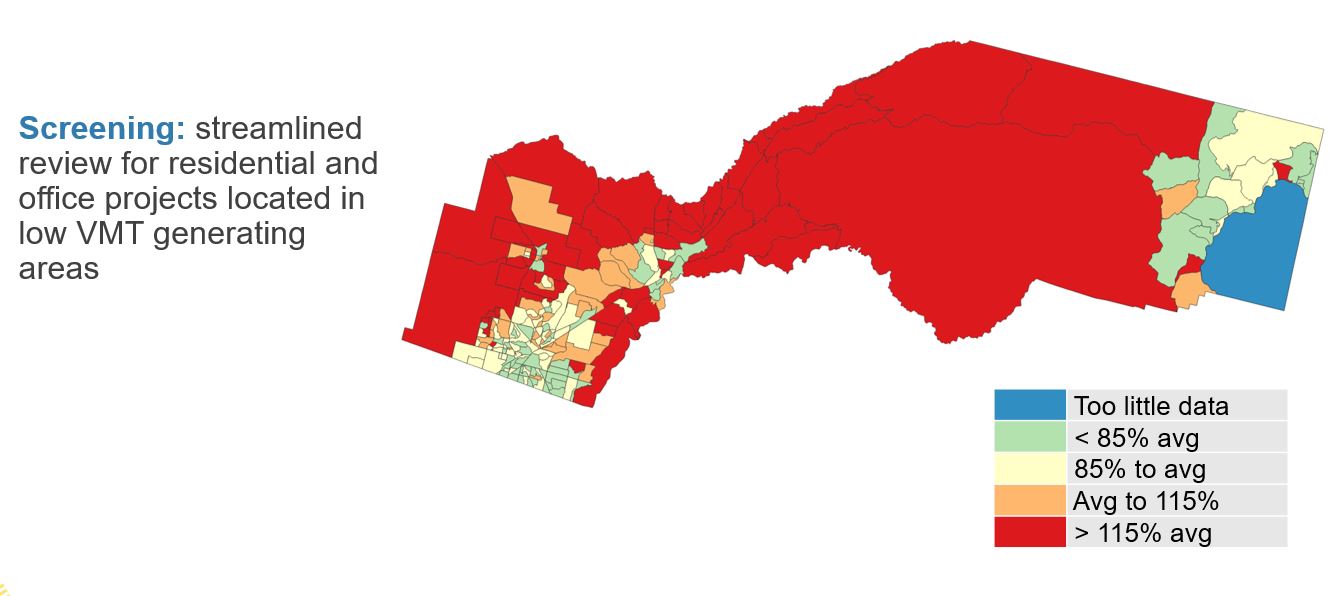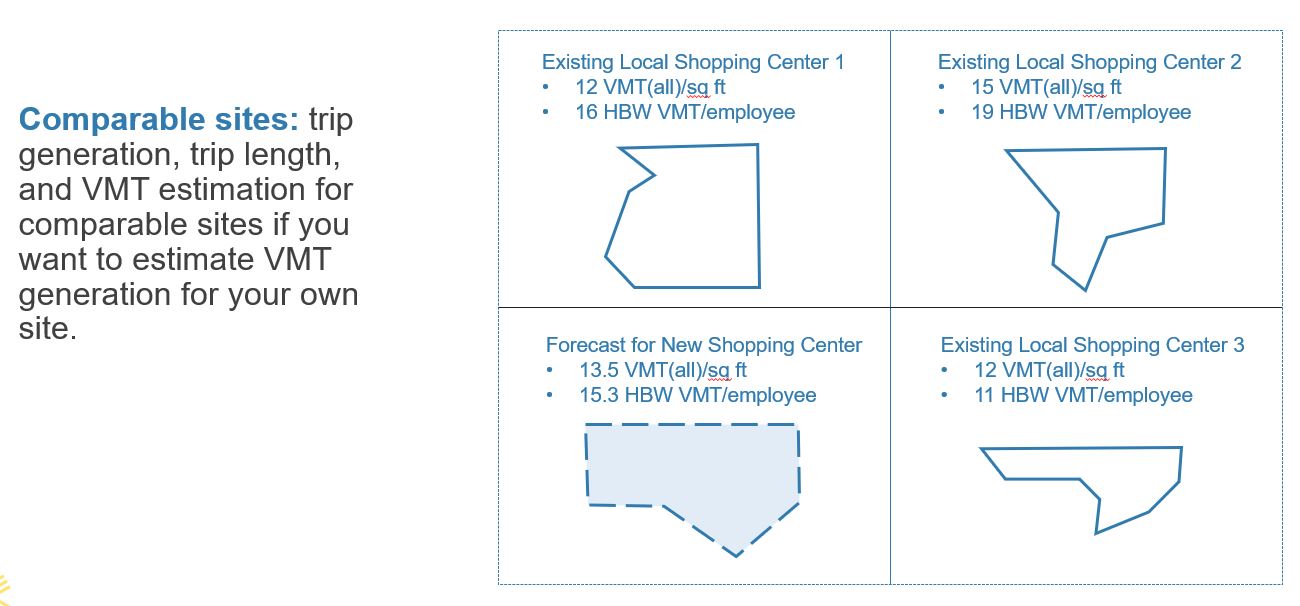
California SB 743: Why All States Should Use Vehicle Miles Traveled (VMT) vs Level of Service

Transportation experts across the country are studying the effects of record low transportation greenhouse gas emissions this spring, and finding an unexpected potential takeaway from the COVID-19 pandemic. The question is, how can we create infrastructure and incentives to keep emissions low as people begin to travel again and the economy recovers?
California shows us a progressive option. By passing State Bill 743 (SB743), California is shifting how it measures the impact of transportation projects. Formerly projects were measured by Level of Service (LOS), or the capacity of infrastructure to handle the increased traffic flow. SB 743 requires that transportation projects evaluate the effect on vehicle miles traveled (VMT), or how much more traffic the project will cause. In other words, measure not the impact on drivers, but the impact that driving has on all of us.
This is the right way to evaluate transportation projects, and not just for urban or highly populated localities. Here’s why VMT impact should inform planning in all states.
What SB 743 Measures
The California Environmental Equality Act has mandated that the VMT becomes one of the thresholds for assessing environmental impact for any development or any road project. In other words, how many vehicles miles traveled will be generated by your project?
This is a significant change from estimating how many additional cars the road could hold, to determining how many more trips will be generated.
Intended Use Case #1 – Screening
HBW TRIP LENGTH – RESIDENTS VMT IMPACT SCREENING COMPARED TO COUNTY AVG
Figure 1: A project located in an area that has low VMT/capita compared to the surrounding area may be able to streamline the CEQA permitting process.
Today, the world outside California performs transportation studies like a project I recently helped with: We determined that a commercial building would generate more congestion. The existing road was only two lanes wide, so the project proponents had to put in a third lane. And if you build it, they will come! So there were more cars on the road, and more emissions.
Intended Use Case #2 – Comparables
HBW TRIP LENGTH – RESIDENTS VMT IMPACT SCREENING COMPARED TO COUNTY AVG
Figure 2: By looking at VMT generated by similar existing locations, practitioners can more accurately forecast the VMT impact of a new development.
But if we had adhered to VMT guidelines instead of LOS, we wouldn’t have been free to build more capacity. Instead, we may have developed techniques to serve the same amount of visitors with less driving (transit options or locating the project in a denser, more walkable part of the city). Less personal vehicle traffic, lower emissions.
Better Results Beyond California
Incorporating VMT into transportation studies, or replacing LOS completely, has benefits not just for California but for Midwest farmland, Northeast urban centers, Southern sprawl, and everything in between.
Increased Safety
Lower VMT can contribute to lower traffic crash rates. The U.S. has the highest vehicle crash rate in the world, linked to our correspondingly highest driving rate. There is a body of research linking VMT with vehicle-related fatalities, with many Vision Zero advocates supporting a decrease in VMT.
Health Benefits
The U.S. has a known obesity problem, particularly across the midwest and southeast, known to be linked to a growing body of serious health problems. Not surprisingly, we’re also not walking as much as many other developed countries including Canada, Germany, and China. Honestly, nobody can blame us, when much of our country lacks sidewalks, bike paths, transit hubs, and other infrastructure to promote active transportation.
Improved Environmental Habitats
How many local species of red legged frogs or tiger salamanders will your project displace? What plants will be affected, and how much water runoff will it create?
In California, project managers must pay fees to offset environmental disturbance. Although other parts of the country may not have the level of environmental emphasis as the West coast, planners everywhere should be aware of project impacts. Incorporating VMT into impact studies adds to our understanding of how the environment will be affected.
Farmland Preservation
More greenhouse gas means more global warming, less rain, and fiercer climate change. America’s farmland is shrinking as farmers battle these growing weather challenges.
Water is becoming a threatened natural resource, with drought forcing America’s farmers to fallow their fields. With an emphasis on VMT instead of LOS, fewer roads and less sprawl means less water runoff and better water conservation.
Equitable Housing
As more and more workers can’t afford to live in high income areas, they must commute longer distances, which drives up VMT. Although building new housing in an area far from jobs may not have a problem under LOS guidelines, it would likely create more VMT.
Incorporating VMT studies into residential land use planning can decrease commuting trips simply by placing workers closer to home.
Boosting Density
Favoring VMT can boost the growing “urban village” movement, which places construction around mass transit stations. For some cities, urban village is an actual land-use designation. The idea is to put residences in more dense locations and provide nearby efficient transit, making more of a spoke-and-hub transportation system rather than an endless web.
This type of building is becoming more important in developed areas of the country that have literally run out of room. Instead of building out, planners are looking up.
Ultimately, transportation planning is tied to urban planning and environmental planning. These are three legs of the same stool, and VMT glues them all together.
The Data Powering Updated VMT
One reason California was able to establish SB 743 is that they can now measure VMT in a very granular way. Our VMT metrics have been independently validated for this specific use.
Our Big Data metrics allow California planners to identify VMT by specific land use, like residential travel, “home based work” commutes, retail or “other based other” travel, and more.
In addition, Big Data VMT can pinpoint customized time periods: specific days, hours, days of the week, or or for an annual average time period. It can provide full-trip data, instead of truncating trips as models do. And Big Data VMT can be updated in real-time, so that the data doesn’t age from project to project.
I may be biased, since I live in California. But on SB 743, I think my home state is leading the way for better transportation planning, and a better world

